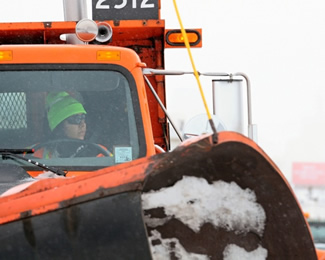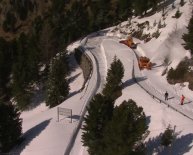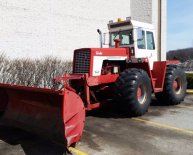
Snow Removal Trucks

- MnDOT plows nearly 12, 000 miles of state highways and interstates in Minnesota, which equals 30, 546 lane miles. (One mile of a four-lane road equals four lane miles.) The Twin Cities Metro area has 5, 481 lane miles that MnDOT maintains.
- MnDOT has approximately 1, 500 full-time snowplow drivers and more than 300 backup drivers. All operators are required to have a valid Class B commercial driver’s license. MnDOT also provides extensive two-week training for new operators each year at Camp Ripley, Minn., and annual refresher training for veteran plow drivers.
- MnDOT has 838 snowplows, including reserve trucks that provide backup in case a snowplow needs maintenance or is damaged.
- MnDOT has 150 truck stations statewide, with 18 of those truck stations in the Twin Cities Metro area.
- Fully equipped trucks weigh as much as 15 times more than an average car.
- A single-axle plow (one set of wheels in the back) can weigh up to 50, 000 pounds when loaded. A new
single-axle truck costs $170, 000. - A tandem-axle plow (two sets of wheels in the back) can weigh more than 70, 000 pounds when loaded. A new tandem truck costs $210, 000.
Snow removal techniques
MnDOT's snow removal program sets goals based on public safety and driver expectations. MnDOT uses market research to determine how quickly the public expects roads to be cleared when setting a performance goal.
Snow removal performance can vary depending on moisture content of the snow, weather conditions and timing of the snow fall. A snowfall that occurs before and during a rush hour will cause more problems than snow falling from midnight to 3 a.m. Heavy, wet snow followed by a cold snap will require more time to clear than dry snow.
MnDOT primarily uses two materials to improve roadway safety and inhibit ice formation:
- Salt – Melts snow and ice on roads when road surface temperatures are below freezing. Salt loses its effectiveness as temperatures drop.
- Sand – Increases traction for motorists on slippery roads, mostly used at intersections and ramps. It may also be used in extreme cold temperatures when salt is less effective.
The following techniques help MnDOT be more efficient and use less salt and sand, which reduces our impact on the environment.
- Anti-icing – Generally refers to applying liquid salt brine to the road surface just before or early in a snowfall event. This prevents precipitation from bonding to the road surface.
- Pre-wetting – A treatment to rock salt or sand that involves applying liquid salt brine or other commercial chemical solutions to the salt or sand mixture. Pre-wetting the salt allows the salt to activate more quickly and cause it to stick to the road surface instead of blowing off to the shoulder and ditch.

















